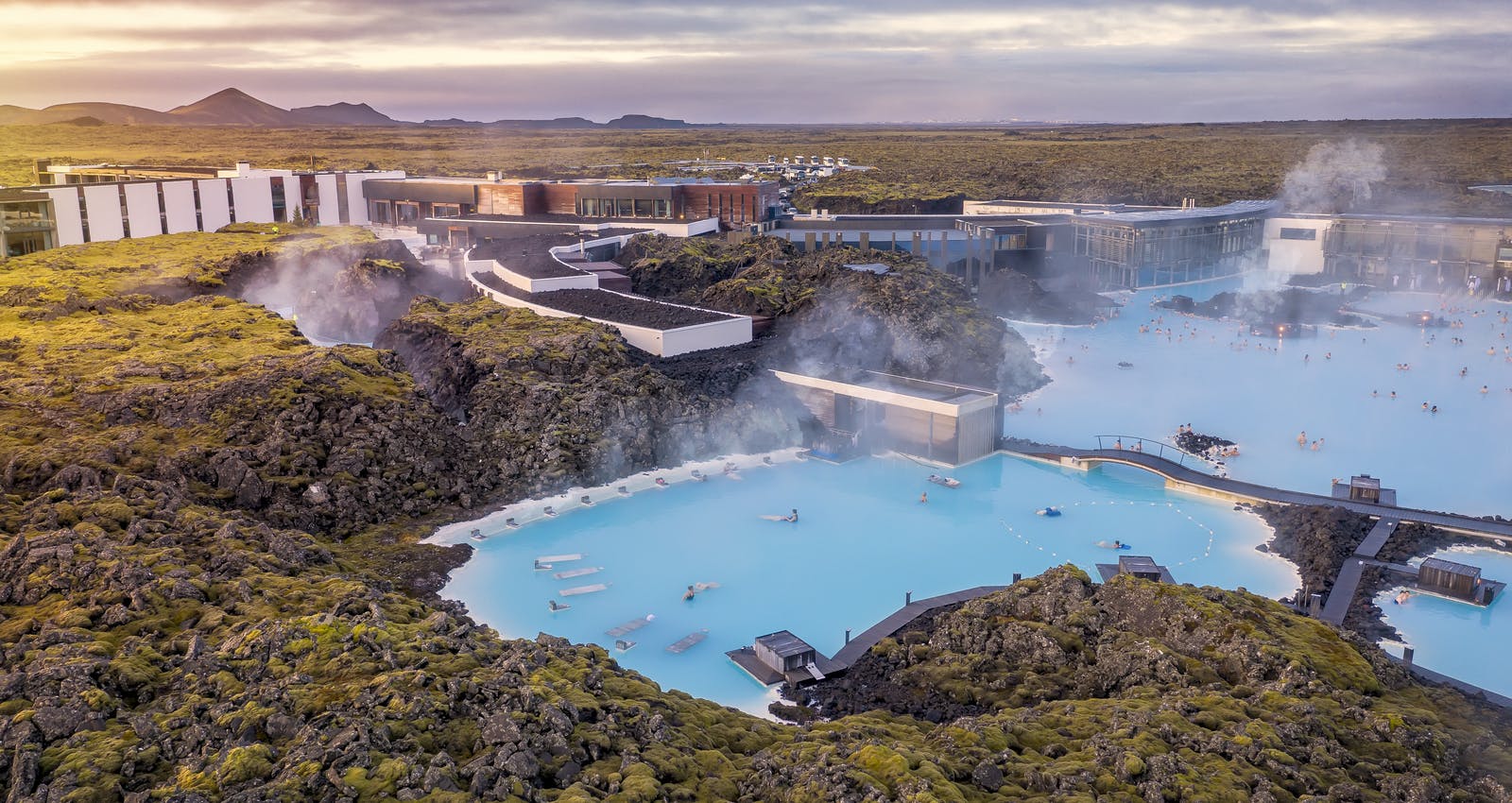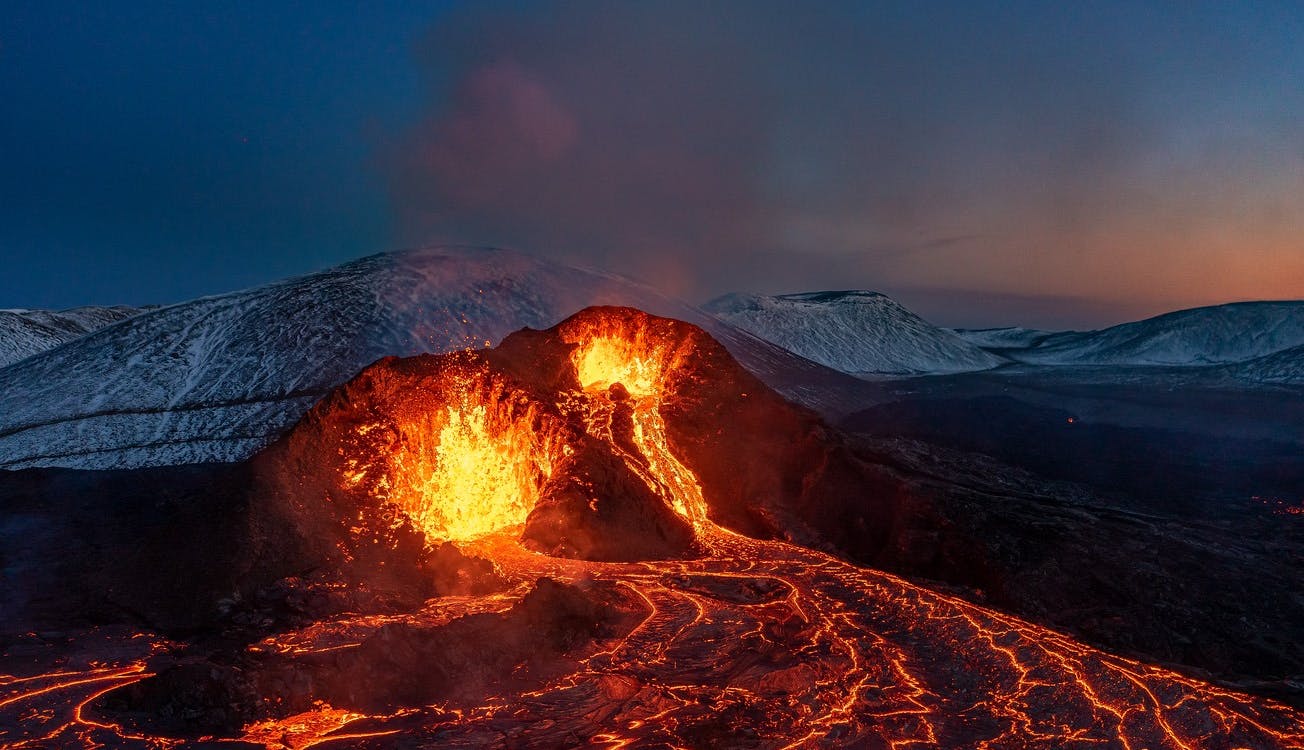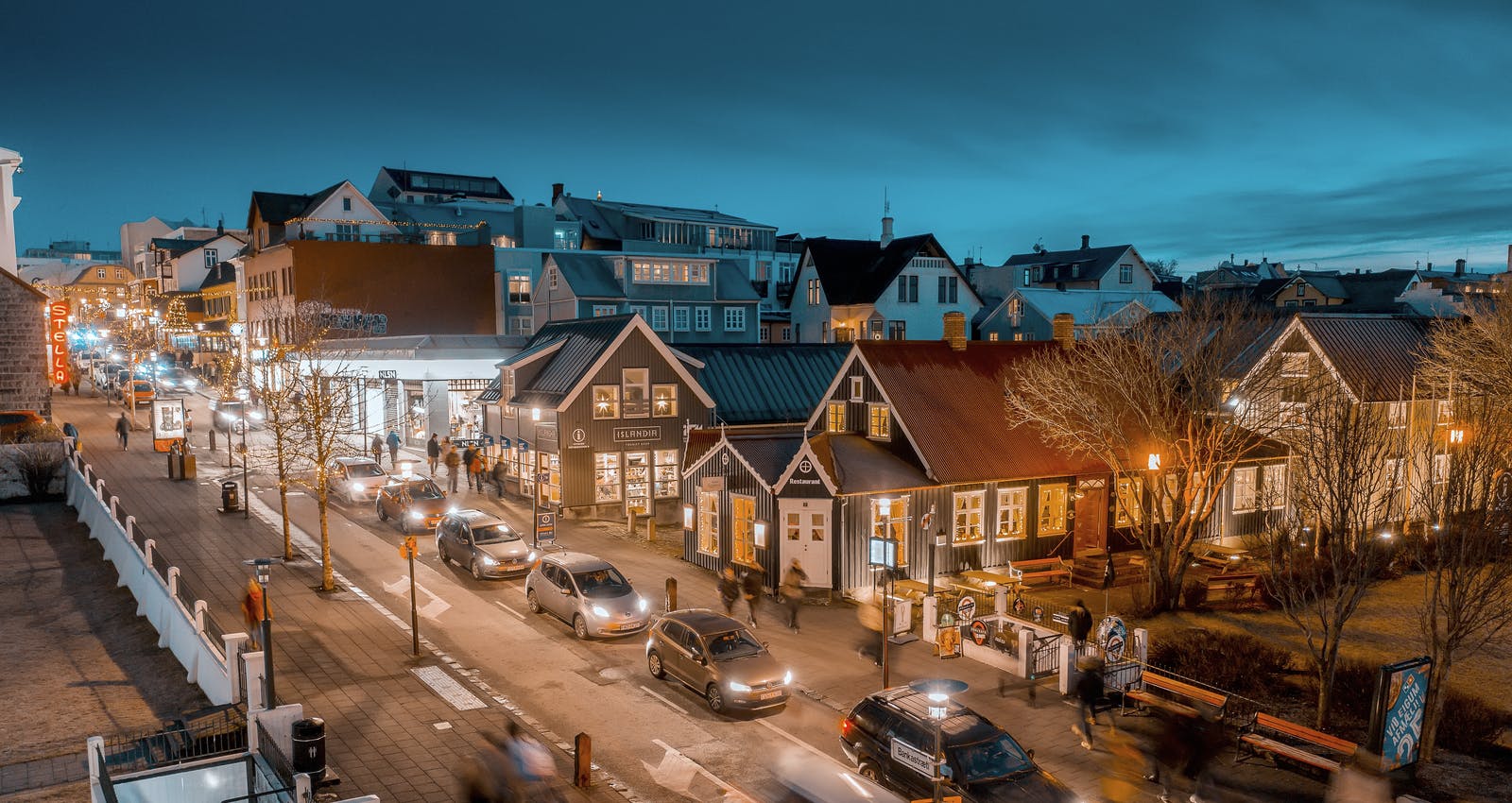
Things To Do In Reykjavík In March
Reykjavík in March offers a unique opportunity for visitors to experience the turning of the Icelandic seasons as the typically brutish winter starts to loosen its grip on the city.
March is not yet really spring—in fact, it’s the month which brings the most snow—but the city really starts to come alive at this time of year. You might notice crocuses start to poke up through the dusting of white, and by the end of the month, the sun is in the sky for 13 hours a day: a big change from the four hours seen in the deep midwinter.
1. Steamy Stuff

To kick off your list of things to do in Reykjavík in March, let’s start with what is arguably the city’s biggest tourist attraction: The Blue Lagoon. If you’ve seen promotional shots of Iceland showing people relaxing in steaming pools of opaque vivid blue water, with white mud packs on their faces, they were probably taken at this iconic geothermal complex.
Located just a minor detour away from the road between Keflakvík Airport and Reykjavík, The Blue Lagoon is easy to visit on your way into or out of the country—and huge numbers of tourists do.
This expansive man-made lake of naturally heated water is rich in silica, minerals and algae, from which it gets its characteristic cloudiness as well as its renowned skincare benefits. The water comes from the nearby Svartsengi geothermal plant, which extracts it boiling hot from deep in the earth. The plant uses the heat to generate electricity and hot water for the surrounding towns, then passes the water on (slightly cooler!) for tourists to relax in.
The Blue Lagoon is open all year round, but we recommend a March visit to avoid the midsummer crush. Also, with a good chance of snow in March, if you’re lucky, you’ll experience luxuriating up to your neck in hot spring water while snowflakes drift down on your head.
2. Hot Stuff
A short distance roughly east from The Blue Lagoon lies Geldingadalir: the site of the first of several recent eruptions of a volcanic system previously dormant for 800 years. The first shoots of fire in recent times from the Fagradalsfjall volcanic system emerged on 19th March 2021, preceded by weeks of earthquakes that were felt right across the region including in Reykjavík.
The fissure volcano that developed didn’t throw up any ash to interfere with aviation and was far enough away from roads, infrastructure, and homes not to cause much concern. But it was close enough to a main road to be a relatively easy hike for visitors, and “the tourist volcano” soon became a major draw for those around the world interested in the wilder side of nature.
Over the six months of the initial eruption, what had once been a valley completely filled up with the emerging magma and turned into a lava field which can now be accessed on foot. Be prepared for a moderately difficult 14 km round-trip hike from the car park to the eruption site over hilly terrain and rough, loose ground.
3. Cool Stuff

But if an anniversary hike to the site of Iceland’s most recently awakened volcanic system sounds a bit strenuous, then Perlan has a much easier option to add to your list of things to do in Reykjavík in March. The Lava Show exhibit gives you stunning insights into the Geldingadalir eruption, explaining the science behind this awesome geological phenomenon which sits at Iceland’s very core.
Perlan also features volcanoes in its Superpowers exhibition, an exciting glimpse into the forces of Icelandic nature, which also include earthquakes and geothermal energy. Earthquakes are a routine part of life in Iceland and always precede a volcanic eruption. Geothermal energy is also the norm in Iceland—it heats over 90% of the nation’s buildings—and our awesome Superpowers exhibit will give you all the geothermal background you need to make the most of your visit to The Blue Lagoon.
4. Mmmm… beer!
Back to more city-related attractions to add to your list of things to do in Reykjavík in March. On the first day of this month, every year, Icelanders celebrate beer. While that doesn’t seem like a bad idea in itself (at least if you’re Homer Simpson), it does have a historical reason.
Until the 1st of March 1989, full-strength beer was illegal in Iceland. The ban dated back some 74 years, but by the eighties, it had become obvious that the law was somewhat pointless. Pragmatic Icelanders were simply buying low-alcohol beer in bars, which was legal, and throwing a shot of spirits in. It wasn’t too long before the Icelandic parliament repealed the law, and the day is now marked every year by Icelanders… well, drinking beer!
5. Battling Bands

If you’re looking for a connection with Iceland’s remarkably fertile musical culture, you should add The Music Experiment Festival (Músíktilraunir) to your list of things to do in Reykjavík in March.
This competition, open to Icelandic bands and musicians in their teens and early twenties, has been around for some 40 years and has unearthed some of the cream of Icelandic musical talent: one of the nation’s biggest musical exports—Of Monsters And Men— came to prominence through this battle of the bands.
The event takes place in Reykjavík’s iconic Harpa concert complex, and this year, heats will be held from the 10th to the 16th of March.
FAQ

Is March a good month to go to Reykjavík?
In many ways, March is the optimal time to make your pilgrimage to the world’s most northerly capital. The island is on the cusp of spring, with the days getting notably lighter and longer, but you’re still likely to get a good dusting of snow to set the Nordic tone. And temperatures will still be hovering around freezing, reminding you why there’s ice in the name Iceland.
Can you see the northern lights in March in Reykjavík?
The solar effect on the earth’s atmosphere, which causes the northern lights, or aurora borealis, is strongest around the earth’s equinoxes. These take place around the 20th of March and the 23rd of September, making looking for the lights one of the top things to do in Reykjavík in March.
Just bear in mind that since you need dark skies to spot the aurora, getting away from the lights of the city is very important. You should also bear in mind that since December is the darkest month, many visitors choose to do their aurora hunting then as the skies are darkest for the longest.
But if you miss out, don’t worry—Perlan has got your back! Our Áróra exhibit, staged in the only high-definition planetarium in Iceland, will take you up among the mystical northern lights and let you in on all their secrets. No standing in the cold, hunting and hoping; a sighting is guaranteed!
Can I wear jeans in Iceland in March?
Nobody is going to arrest you if you choose to wear jeans in Iceland at any time of year! But since your enjoyment of the great Icelandic outdoors will depend to some extent on your personal comfort, we would recommend hiking pants and waterproof overtrousers to protect you from the cold and soggy Icelandic weather. Once denim is wet, it tends to stay that way.
So, by all means, bring your jeans, but perhaps keep them fresh for nights out hopping around the lively bars of downtown Reykjavík.
Is Reykjavík snowy in March?
As winter slowly gives way to spring this month, the amount of white stuff falling from the sky remains surprisingly high. Iceland’s winter snowfall figures really only fall off considerably in April, so there’s a good chance that you’ll be trudging through ice, snow and slush during your March visit. Dress accordingly!
How rainy is Iceland in March?
March is commonly the month that tops the charts of Icelandic precipitation figures, and in addition to water falling as snow, you can also expect rain and hail. In fact, in March, you’re likely to experience the full range of Icelandic weather: snow, rain, hail, sunshine, wind and anything else that you can think of—sometimes all at once! Or at least in quick succession.
What is the cheapest month to visit Iceland?
To be honest, there will always be travel destinations that are cheaper than Iceland; living on an island where nearly everything except sheep, fish, and geothermal energy has to be imported tends to keep prices on the high side.
However, during the visitor lull of January, when lower demand reduces prices, you might find cheaper rates for things like accommodation. Things get most crowded and expensive during the high season in August, with March somewhere in between the two.
How many days in Reykjavík is enough?
March is the time of year when the Icelandic winter starts to recede, the country’s roads become more reliably passable, and daylight sticks around long enough to drive reasonable distances safely. As a result, you can start to plan road trips around the island in March, in which case you’ll need to balance your time in the capital with the rest of your schedule. Most visitors to Iceland spend a total of about seven or eight nights in the country.
However, if you have no plans to venture beyond the capital, then you can stay for as little or for as long as you like; there’s never any shortage of things to do. But since you will probably have flown at least three hours to get here, we’d recommend three days as a minimum stay to get yourself orientated and take in the main sights. And you can definitely spend an entire day just experiencing the numerous delights of Perlan!
Popular articles

Reykjanes Volcanoes Overview
Enjoy a complete overview of the Reykjanes Volcanoes from 2021-2024. Learn about its geology, recent activity, and visitor tips for a safe, memorable experience.

Reykjanes Peninsula Volcanoes: Sundhnúksgígar Eruptions
The anticipated volcano has erupted in the Reykjanes Peninsula, the site is being called Sundhnúkagígar. See the historic insights on the seismic activity and volcanic eruptions.

Earthquakes in Iceland
Earthquakes in Iceland are a fact of life. Each year, hundreds of small tremors shake the earth, a reminder of the country’s position on a tectonic plate boundary.

Volcano Museums and Exhibitions in Iceland
If you don't manage to visit an actively erupting volcano in Iceland - Experience its force at one of these excellent volcano museums and exhibitions in Iceland.

Top 10 Places To See the Northern Lights in Iceland
You can see the northern lights across the country, but some spots are more suitable than others. Find the best place to see the northern lights in Iceland.

Ice Caves From Reykjavik
Travel beyond the capital for a closer look at an ice cave under one of Iceland’s glaciers. If you can’t spare the time, experience Perlan’s ice cave in Reykjavik.